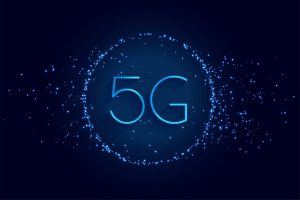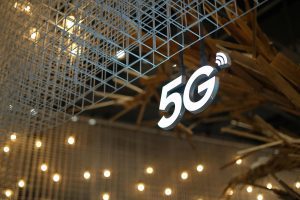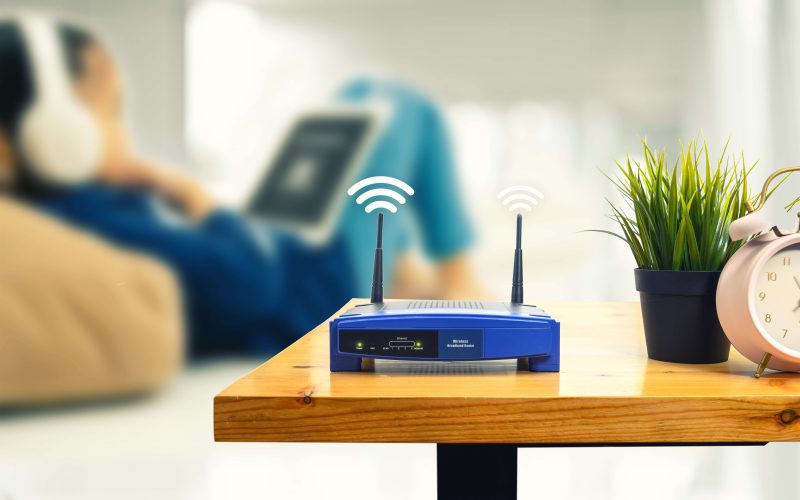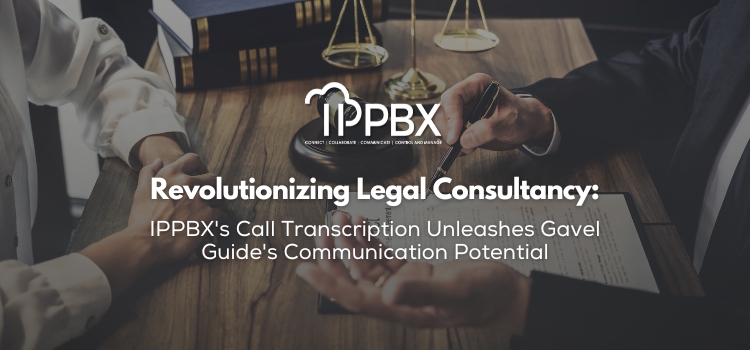All the Information You Require (2024)
Are you fed up with sluggish, costly, or inconsistent internet service? You’re not by yourself. According to a recent study, internet service providers (ISPs) in the United States came in second to last in terms of customer satisfaction. Traditional cable connections are still used in many homes, but with the introduction of 5G technology, this is quickly changing. With the help of case studies and real-world examples, this article will explore what 5G home internet is, its pros and limitations, and how it stacks up against regular broadband.
Understanding 5G Technology

What Does 5G Mean?
Fifth generation, or 5G, is the newest worldwide wireless standard intended to deliver quicker and more dependable internet access. Over the past few years, mobile providers have been utilising unused radio frequencies in the upper part of the spectrum to build out 5G networks. 5G delivers notable enhancements over 4G, its predecessor:
- Faster Speeds: Theoretical speeds can reach over 10 Gbps, although real-world speeds often hover around 1 Gbps, which is more than sufficient for most households.
- Lower Latency: With latencies as low as 1 millisecond, 5G allows for quicker response times, crucial for activities such as online gaming and video conferencing.
- More Connected Devices: 5G can handle a greater number of connected devices simultaneously, making it ideal for smart homes where multiple devices operate at once.
What Is 5G Home Internet?
An innovative substitute for conventional broadband connections is 5G home internet. 5G home internet connects to the 5G cellular network wirelessly rather than using physical connections to provide the internet into your house. This is how it operates:
- Receiver Installation: A fixed receiver, either installed inside or outside your home, connects to the nearest 5G cell tower.
- SIM Card and Modem: You will typically need a SIM card and a modem/router to convert the incoming signal into Wi-Fi for your devices.
- Service Contract: Just like with a mobile phone plan, you’ll sign a service contract with a mobile carrier.
How 5G Home Internet Compares to Broadband
Even though 5G home internet is an intriguing alternative, it’s important to know how it stacks up against conventional broadband. The delivery technique is the primary distinction. While 5G home internet depends on wireless communication, broadband usually requires a physical connection via cable, fibre, or DSL lines.
You can benefit from extremely fast internet connections if your home is connected to a fibre optic cable. However, you can run into restrictions if you’re using copper connections for your connection. If you live in a location with strong 5G coverage, 5G can provide competitive speeds.
Benefits of 5G Home Internet
1. Easier Installation
The simplicity of installation is one of the main benefits of 5G home internet. Setting up your internet service is simple if you don’t need a physical cable. It is frequently possible to perform the installation without the assistance of an expert. Renters or people who wish to avoid the trouble of making appointments can especially benefit from this.
Example:
John and Sarah, a young couple living in an urban apartment, decided to switch to 5G home internet after struggling with their previous cable provider. They found a local carrier offering a simple setup process. Within an hour, they had installed their new 5G receiver and were online without needing a technician visit.
2. Speed Advantages
With strong 5G coverage in your area, you can enjoy fast internet speeds. While 4G LTE maxes out at around 100 Mbps, 5G has the potential to provide speeds that significantly surpass that, often reaching 1 Gbps or more. This makes 5G home internet a viable option for streaming, gaming, and heavy internet usage.
Case Study:
In a recent analysis, a household in San Francisco switched from a 100 Mbps broadband plan to a 5G home internet service offering 1 Gbps. The family noticed immediate improvements in their online experience, particularly during peak hours when their previous service would slow down. They could stream multiple 4K videos simultaneously without buffering.
3. Cost-Effectiveness
5G home internet can be cheaper than traditional wired options. Many carriers offer competitive pricing, with some plans starting as low as $15 a month. Carriers often provide discounts for existing mobile customers, making it an attractive option for those looking to bundle services.
Example:
Laura, a college student, was initially hesitant to switch from her wired internet plan costing $50 a month. After exploring her options, she discovered that her mobile provider offered a 5G home internet plan for $30 a month, which included unlimited data. By switching, she saved $240 annually.
4. Unlimited Data Plans
Many 5G home internet providers are eager to attract new customers, which has led to numerous offers for unlimited data plans. This is particularly appealing for households that engage in high-bandwidth activities such as streaming and online gaming, which can quickly consume data.
Case Study:
The Martinez family, who love binge-watching shows and playing online games, faced constant data overage fees with their previous plan. After switching to a 5G provider with an unlimited data plan, they no longer worry about data caps, resulting in a more enjoyable and worry-free internet experience.
5. Flexibility for Remote Areas
For those living in remote areas where traditional broadband services are limited or nonexistent, 5G home internet can be a game-changer. As 5G networks expand, more rural communities will gain access to fast internet, improving their quality of life and opportunities for remote work and online learning.
Example:
In rural Montana, a local farmer struggled to access reliable internet for his agricultural operations. After the introduction of 5G home internet in his area, he quickly switched providers. The faster speeds enabled him to monitor his crops and equipment remotely, significantly enhancing his productivity.
Disadvantages of 5G Home Internet

While 5G home internet has its benefits, it’s essential to be aware of its potential drawbacks.
1. Coverage Limitations
5G coverage is not universally available. Urban areas tend to have better access, while rural locations may struggle to connect. If you don’t live in a location with robust 5G infrastructure, you may not enjoy the promised benefits of this technology.
Example:
Sarah, who lives in a small town outside of Atlanta, was excited about the possibility of switching to 5G home internet. However, after checking coverage maps, she discovered that her area had limited 5G availability. Unfortunately, she had to stick with her slow broadband service for the time being.
2. Line of Sight Requirements
For optimal performance, 5G requires a good line of sight to a cell tower. This may involve installing an antenna on the outside of your home, especially if there are obstructions like trees or buildings. The signal can struggle to penetrate walls, which could lead to connectivity issues.
Case Study:
The Thompson family in their suburban home enjoyed great speeds after installing a 5G home internet plan. However, they experienced interruptions when the leaves on their trees grew thick during summer. To solve the issue, they had to install an external antenna to maintain a strong signal.
3. Network Congestion
As 5G adoption grows, there is a risk of network congestion. In areas with high usage, you may experience slower speeds or interruptions, particularly during peak times. This can affect the reliability of your internet connection, which is a significant consideration for users relying on consistent performance.
Example:
In a highly populated neighborhood in Los Angeles, many residents switched to 5G home internet. During peak usage times in the evenings, several families reported slower internet speeds due to increased traffic on the 5G network. While the speeds were still competitive, the congestion reminded them of their previous experiences with overloaded broadband.
Who Offers 5G Home Internet?
Several mobile carriers are leading the charge in providing 5G home internet services. Here’s a look at some of the primary players in the market:
In the United States:

- AT&T Internet Air: Offers a range of plans that combine 4G LTE and 5G services, making it accessible for various users.
- Starry Home Internet: Known for its competitive pricing and flexibility in plans, especially in urban areas.
- T-Mobile 5G Home Internet: Provides unlimited data options and low-cost plans, catering to families and remote workers.
- US Cellular Home Internet: Offers 5G plans alongside its existing services, focusing on regional availability.
- Verizon 5G Home Internet: Features various pricing tiers and packages, including discounts for existing customers, making it an appealing choice.
In the United Kingdom:
- EE 4G and 5G Mobile Broadband: Offers packages for both home and mobile use, known for strong coverage in cities.
- National Broadband 5G: Provides a comprehensive selection of broadband options with competitive pricing.
- Three 4G and 5G Home Broadband: Recognized for its customer service and competitive pricing structures.
- Vodafone 5G and 4G Broadband: Offers a blend of wired and wireless options, catering to diverse user needs.
Is 5G Home Internet Expensive?
5G home internet prices are comparable to traditional broadband services. In fact, they can even be cheaper for some users. Plans generally range from $30 to $80 per month, depending on the speed and service levels. Many carriers also offer promotional deals, such as no fixed contracts, no equipment fees, and limited-time discounts for new customers.
Example:
A family considering a switch from their $60 broadband plan found that a local carrier was offering a 5G plan at $40 a month with the added benefit of unlimited data. This allowed them to save money while upgrading their internet service.
How to Choose the Right 5G Home Internet Plan
When considering a switch to 5G home internet, it’s essential to evaluate your needs and the available options:
1. Check Coverage
Before making a decision, check the coverage maps from your preferred carriers. Ensure that 5G coverage is strong in your area. If you live in a city, you’re more likely to have access to reliable 5G service. However, rural areas may still lack robust infrastructure.
2. Evaluate Your Internet Usage
Consider how you use the internet. If your household frequently streams movies, plays online games, or has multiple users connecting simultaneously, opt for a plan that offers higher speeds and unlimited data.
3. Compare Plans
Compare plans from various carriers. Look for promotions, bundled services, and any additional fees that may apply. Many carriers offer incentives for signing up for multiple services, such as mobile and home internet.
4. Read Reviews and User Experiences
Look for reviews and case studies from users in your area. Their experiences can provide valuable insights into the reliability and performance of the 5G service you’re considering.
Case Study:
After doing extensive research, a user in Chicago read reviews about the performance of a specific 5G provider in their neighborhood. They discovered mixed reviews regarding speed during peak hours but noted that most users were satisfied with customer service, which influenced their decision to proceed with the provider.
Conclusion
5G home internet offers an intriguing substitute for conventional broadband services as it develops further. It provides a viable answer for many households with quicker speeds, simpler installation, and maybe lower pricing. Before making the transfer, it is essential to comprehend the constraints, such as coverage gaps and network congestion. You may choose the ideal internet solution for your house by assessing your requirements and weighing your possibilities. And 5G home internet can be the best option for you if you want to boost your online gaming skills, stream more content, or just have a dependable internet connection. The future of home internet is bright as more providers launch their offerings and technology advances.










